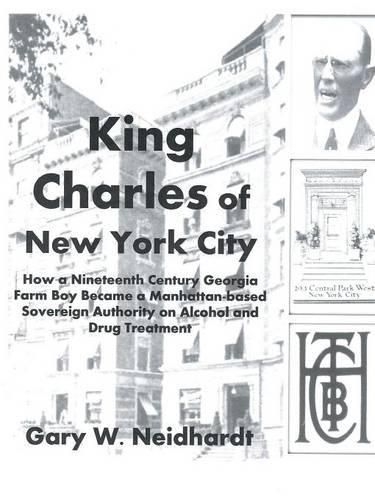Readings Newsletter
Become a Readings Member to make your shopping experience even easier.
Sign in or sign up for free!
You’re not far away from qualifying for FREE standard shipping within Australia
You’ve qualified for FREE standard shipping within Australia
The cart is loading…






This title is printed to order. This book may have been self-published. If so, we cannot guarantee the quality of the content. In the main most books will have gone through the editing process however some may not. We therefore suggest that you be aware of this before ordering this book. If in doubt check either the author or publisher’s details as we are unable to accept any returns unless they are faulty. Please contact us if you have any questions.
More than seventy years before the Betty Ford Clinic opened in 1982, Charles Towns opened a treatment center on Central Park in Manhattan in one of the wealthiest neighborhoods in the United States. The likes of W. C. Fields, Lillian Russell, and John Barrymore eventually required the services that Towns Hospital provided. He had perfected what been called the world’s only known opium cure in China after having been sent there as a United States drug treatment ambassador. Upon his return, he gave his secret remedy away and had it published in the Journal of the American Medical Association. How can it be that this most persuasive and influential personality of the 1910s can be almost entirely forgotten today? The year 2015 represents the centennial of the federal law that implemented narcotic prohibition, yet this milestone has been passing almost unnoticed. However, with the magnitude of the illegal drug problem facing the United States today, the origins of federal narcotic legislation may significantly improve our focus on the mistakes of the past so that they may not be repeated. In late 1934, Bill Wilson had a white-light experience at Towns Hospital, which led to him to become a cofounder of Alcoholics Anonymous and author of the book that shared that name. Wilson carefully avoided writing about controversial figures such as Towns and Frank Buchman, founder of the Oxford Group, until many years later. AA also evolved with a singleness of purpose, which remains silent to this day about drugs. Herein one can discover that without Charles Barnes Towns, the struggling fellowship of AA in the late thirties may not have been successful. A fascinating, previously untold story can now be revealed.
$9.00 standard shipping within Australia
FREE standard shipping within Australia for orders over $100.00
Express & International shipping calculated at checkout
This title is printed to order. This book may have been self-published. If so, we cannot guarantee the quality of the content. In the main most books will have gone through the editing process however some may not. We therefore suggest that you be aware of this before ordering this book. If in doubt check either the author or publisher’s details as we are unable to accept any returns unless they are faulty. Please contact us if you have any questions.
More than seventy years before the Betty Ford Clinic opened in 1982, Charles Towns opened a treatment center on Central Park in Manhattan in one of the wealthiest neighborhoods in the United States. The likes of W. C. Fields, Lillian Russell, and John Barrymore eventually required the services that Towns Hospital provided. He had perfected what been called the world’s only known opium cure in China after having been sent there as a United States drug treatment ambassador. Upon his return, he gave his secret remedy away and had it published in the Journal of the American Medical Association. How can it be that this most persuasive and influential personality of the 1910s can be almost entirely forgotten today? The year 2015 represents the centennial of the federal law that implemented narcotic prohibition, yet this milestone has been passing almost unnoticed. However, with the magnitude of the illegal drug problem facing the United States today, the origins of federal narcotic legislation may significantly improve our focus on the mistakes of the past so that they may not be repeated. In late 1934, Bill Wilson had a white-light experience at Towns Hospital, which led to him to become a cofounder of Alcoholics Anonymous and author of the book that shared that name. Wilson carefully avoided writing about controversial figures such as Towns and Frank Buchman, founder of the Oxford Group, until many years later. AA also evolved with a singleness of purpose, which remains silent to this day about drugs. Herein one can discover that without Charles Barnes Towns, the struggling fellowship of AA in the late thirties may not have been successful. A fascinating, previously untold story can now be revealed.